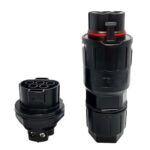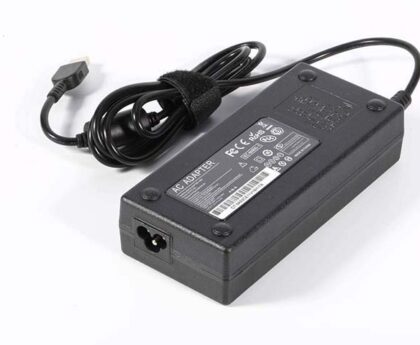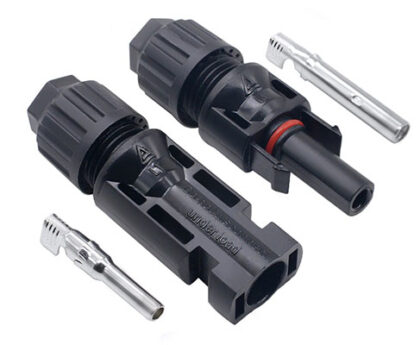Connectors play a crucial role in many electrical and electronic systems, allowing components and devices to communicate and transfer power. There are many types of connectors available, and choosing the right one for a given application is important for ensuring reliable performance and safety. In this post, we will focus on the differences between male and female connectors and explore their respective designs, functions, applications, and advantages and disadvantages.
Definition of Male and Female Connectors
Male connectors are typically designed with protruding pins or blades that can be inserted into a corresponding female receptacle. Female connectors, on the other hand, have holes or sockets into which male connectors can be inserted.
Male Connectors
Male connectors are typically characterized by their protruding pins or blades, which can be inserted into female receptacles. Some common types of male connectors include:
- Pin connectors: These connectors have one or more thin pins that can be inserted into a female receptacle. They are often used in low-voltage applications, such as in audio and video connections.
- Blade connectors: These connectors have one or more flat blades that can be inserted into a female receptacle. They are often used in higher-voltage applications, such as in automotive and industrial systems.
Female Connectors
Female connectors are typically characterized by their holes or sockets, which can receive male connectors. Some common types of female connectors include:
- Socket connectors: These connectors have one or more sockets that can receive male pins. They are often used in low-voltage applications, such as in audio and video connections.
- Receptacle connectors: These connectors have one or more holes that can receive male blades. They are often used in higher-voltage applications, such as in automotive and industrial systems.
Differences in Design and Function
Male and female connectors differ not only in their physical appearance, but also in their design and function.
Physical Differences
Male connectors are generally smaller and more compact than female connectors, as they do not need to accommodate the insertion of male connectors. This makes them well-suited for applications where space is limited. Female connectors, on the other hand, are often larger and more complex in design, as they must provide a secure and stable connection with male connectors.
Functional Differences
Male connectors are typically designed to be inserted into female connectors, while female connectors are designed to receive male connectors. This means that male connectors are typically the “plug” in a connection, while female connectors are the “socket.”
In terms of function, male connectors are often used to transmit power or signals from one component to another, while female connectors are used to receive and distribute these power or signals. This means that male connectors are often found at the “source” end of a connection, while female connectors are found at the “load” end.
Applications of Male and Female Connectors
Male and female connectors are used in a wide range of applications, including audio and video, automotive, industrial, and many others. Some specific examples of where male and female connectors are used include:
Male and female Connectors
- Audio and video connections: Male RCA connectors are commonly used to connect audio and video components, such as TVs and DVD players.
- Computer connections: Male USB connectors are commonly used to connect computers and other devices, such as printers and external hard drives.
- Automotive connections: Male blade connectors are commonly used to connect automotive systems, such as in wiring harnesses and electrical components.
- Industrial connections: Male connectors are commonly used in industrial systems, such as in control panels and electrical equipment.
- Medical equipment: Male connectors are often used in medical equipment, such as in monitoring devices and diagnostic equipment.
Advantages and Disadvantages of Male and Female Connectors
Male and female connectors each have their own unique advantages and disadvantages, depending on the specific application.
Advantages of Male Connectors
- Compact size: Male connectors are generally smaller and more compact than female connectors, which can be an advantage in applications where space is limited.
- Easy insertion: Male connectors are designed to be easily inserted into female connectors, which can make them more convenient to use in some situations.
- Good for transmitting power or signals: Male connectors are often used to transmit power or signals from one component to another, which can make them well-suited for certain applications.
Disadvantages of Male Connectors
- Fragile pins: The pins on male connectors are often thin and fragile, which can make them prone to damage or breakage.
- Poor retention: Male connectors may not always provide a secure connection with female connectors, as they may not have as much surface area to grip onto.
Advantages of Female Connectors
- Good retention: Female connectors are typically designed to provide a secure and stable connection with male connectors, which can make them less prone to disconnection or loose connections.
- Good for distributing power or signals: Female connectors are often used to receive and distribute power or signals, which can make them well-suited for certain applications.
- Easy to customize: Female connectors can be customized to fit a wide range of male connectors, which can make them more versatile in certain situations.
Disadvantages of Female Connectors
- Larger size: Female connectors are generally larger and more complex in design than male connectors, which can be a disadvantage in applications where space is limited.
- More difficult to insert: Female connectors are typically designed to receive male connectors, which can make them more difficult to insert in some situations.
Conclusion
Male and female connectors are an important component in many electrical and electronic systems, and understanding the differences between them is crucial for choosing the right type for a given application. Male connectors are typically smaller and more compact, and are often used to transmit power or signals from one component to another. Female connectors are typically larger and more complex in design, and are often used to receive and distribute power or signals. Both male and female connectors have their own unique advantages and disadvantages, and choosing the right type will depend on the specific needs of the application.



